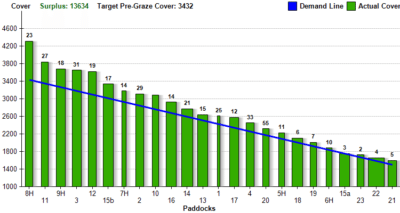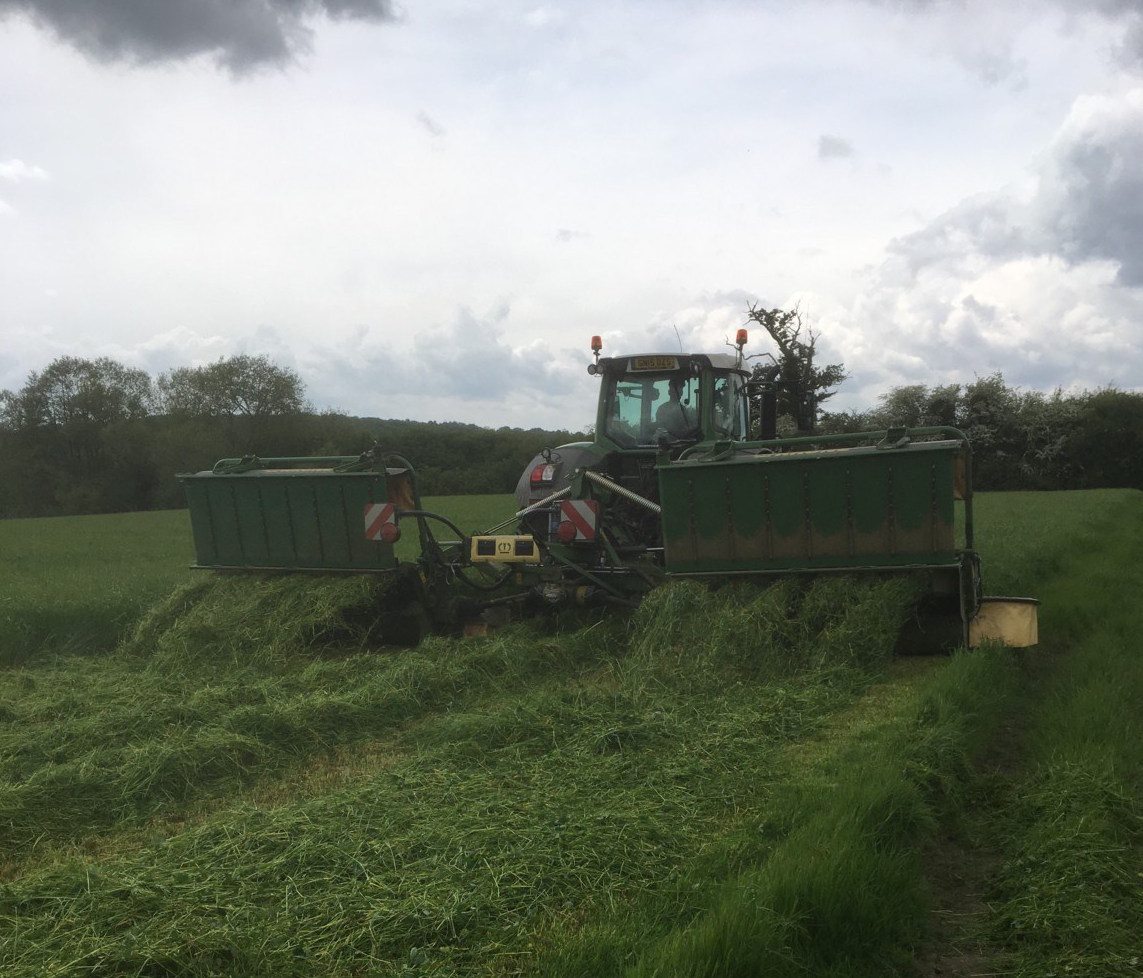Every year May always seems to take me by surprise. During early spring I look forward to the straightforward time ahead when I will be able to spend plenty of time with Emma and the kids, as the farm winds itself down for the long summer ahead.
However, my memories of past years have obviously faded rather too quickly and, as I gather my thoughts for the month ahead, I realise that this will be anything but!
This month is crucial for the winter ahead as we make the 1st and most important cut of grass silage (conserved grass). This will form the basis of the cows food for much of the time when they are at peak milk production and when we’re looking for them to become pregnant again, so it needs to be of the highest quality. At the beginning of May I checked the grass due for cutting and my heart sank as it was looking very sorry for itself after a hard early spring. However, an amazing 2 weeks of weather followed and the grass rocketed out of the ground, so much so that we now have a very healthy pile of grass in our silage clamp.

It is not only conserved grass that we have to manage. It is crucial that the cows have enough grazing grass to keep them happy and productive. To do this we measure the grass on a weekly basis with a plate meter. This tells us roughly how many kg of dry matter of grass we have per hectare of the farm and allows us to feed them just the right amount. This year we have once again enjoyed fantastic amounts of grass, which allows us to feed the cows very little expensive bought-in feed. Our aim here is to try to grow as much grass as a non-organic farm that uses artificial nitrogen to boost growth. I’d like to show that organic farming can eventually be as, if not more, productive without requiring chemical inputs.
Milk price has yet again been hitting the headlines for all the wrong reasons this year, as world price slumps have hit dairy farmers everywhere, with steep price drops sending many farmers close to, or over, the edge. We are now operating in a global environment, therefore a bumper year for production coupled with a dramatic drop in demand has led to a huge oversupply. The situation in the organic market has been slightly better, with supply fairly evenly matching demand, which means a better price. This has led many dairy farmers to once again look at converting to organic production. I feel that this shouldn’t be a decision based solely on the milk price, but instead it must be the desire to farm this way that drives the decision to change. Organic farming must be seen as a long term option as it can take many years to see the reward for the investment in soil and animal health.
There are many mutterings of discontent in the farming world at the moment regarding the future use of the worlds most popular herbicide, glyphosate, more commonly known as Roundup. This is used to tackle weeds in both arable and grassland farming and works by interfering with the enzymatic production of amino acids which are essential for plant growth. This works right down to the roots and generally kills most plants. This means that arable crops are free of weeds and grassland can be cleaned out before reseeding with new grass. The main reason for the debate on its usage is that some studies have shown it to be carcinogenic. However, my unease with its use is the effect it could be having on the rest of the life in the soil and the length of time that it’s residues are around. The soil holds a huge amount of microbial life, much of which exists around the end of the plant roots, feeding off the exudates they give off. As with other chemical and artificial inputs, I feel that their use will naturally diminish as our understanding of the soils increases to the point where they are no longer needed.
As I write this, preparations are in full flow for this years Open Farm Sunday (this coming Sunday the 5th of June). This means a fair amount of elbow grease to get the farm looking at it’s best for the day. It is a great excuse to have a fairly extensive clear out of much of the clutter that accumulates through the year. Farmers are natural hoarders, generally having plenty of room to keep items which generally have little chance of ever being used again. This year has seen 6 tons of scrap metal being pulled from the nettles and has also seen my Dad clear out his shed. This holds items placed temporarily in there 20 years ago, which now look very sorry for themselves. We can now start that process all over again I’m sure!
The weather looks set fair for the day and we have a great line up of local food and drink producers, including High Weald Dairy, High Weald Brewery, Bluebell Vineyard, Deliciously Sussex Ice Cream and many more. This year Arla, our famers cooperative, are heading down from Leeds to support us and to show how they are helping their farmer owners. We also have forest school, farm walks, showing animals, sheep shearing and milking demonstrations so we’re hoping for a great turnout. It would be great to see some of you here at Cockhaise Farm (RH16 2QP) from 11-4.




